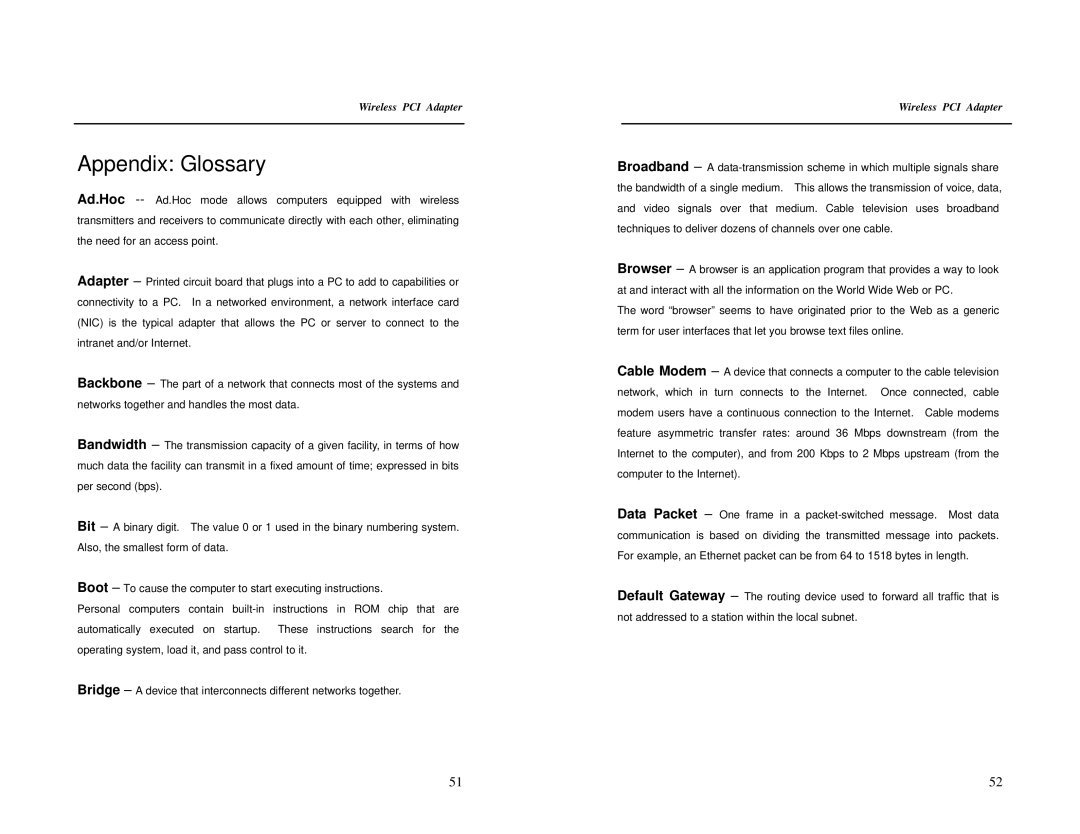Wireless PCI Adapter
Appendix: Glossary
Ad.Hoc
Adapter – Printed circuit board that plugs into a PC to add to capabilities or connectivity to a PC. In a networked environment, a network interface card (NIC) is the typical adapter that allows the PC or server to connect to the intranet and/or Internet.
Backbone – The part of a network that connects most of the systems and networks together and handles the most data.
Bandwidth – The transmission capacity of a given facility, in terms of how much data the facility can transmit in a fixed amount of time; expressed in bits per second (bps).
Bit – A binary digit. The value 0 or 1 used in the binary numbering system. Also, the smallest form of data.
Boot – To cause the computer to start executing instructions.
Personal computers contain
Bridge – A device that interconnects different networks together.
51
Wireless PCI Adapter
Broadband – A
Browser – A browser is an application program that provides a way to look at and interact with all the information on the World Wide Web or PC.
The word “browser” seems to have originated prior to the Web as a generic term for user interfaces that let you browse text files online.
Cable Modem – A device that connects a computer to the cable television network, which in turn connects to the Internet. Once connected, cable modem users have a continuous connection to the Internet. Cable modems feature asymmetric transfer rates: around 36 Mbps downstream (from the Internet to the computer), and from 200 Kbps to 2 Mbps upstream (from the computer to the Internet).
Data Packet – One frame in a
Default Gateway – The routing device used to forward all traffic that is not addressed to a station within the local subnet.
52
